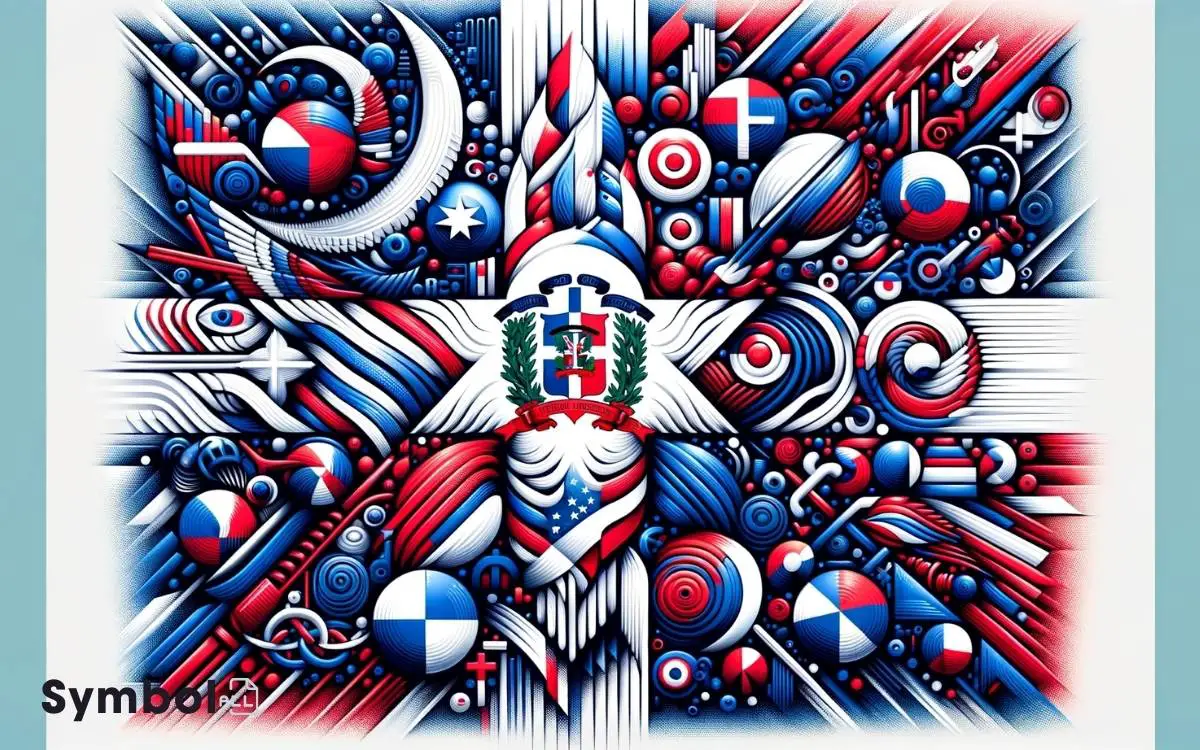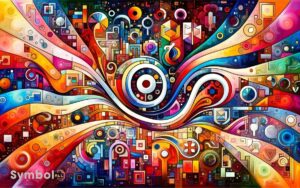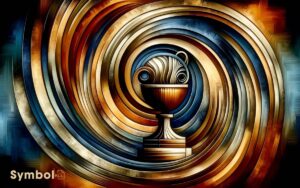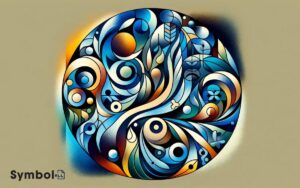Dominican Republic Flag Meaning of Colors and Symbols
You’re looking at the Dominican Republic flag, a symbol born from the 19th century, designed by Juan Pablo Duarte. It’s not just fabric; it’s a declaration of the nation’s struggle for independence.
The red panels speak of the bloodshed, while the white cross promises peace and unity. The blue reflects liberty and democracy, a shout-out to the respect for human rights. Delving into the coat of arms, you’re touching on themes of freedom, truth, and the light of resilience.
This flag isn’t just about past victories; it mirrors the collective hope and enduring spirit of a diverse people, guiding them towards unity and progress.
As you explore further, you’ll uncover even more intricate details that celebrate the Dominican Republic’s rich heritage and aspirations.

Key Takeaways
Historical Background
The origins of the Dominican Republic flag reach deep into the heart of the nation’s struggle for independence, symbolizing both the bloodshed and unity that paved the way for its birth. You’ll find it emerged in the 19th century, a period rife with conflict and aspiration for sovereignty.
Its creation in 1844, immediately following the country’s declaration of independence from Haiti, wasn’t merely an act of new statehood but a declaration of identity and values.
The flag’s design was conceived by Juan Pablo Duarte, a key figure in the Dominican fight for independence.
His vision embodied a commitment to the republic‘s newfound freedom, embedding in the flag’s very fabric the ideals of liberty, democracy, and human rights.
This wasn’t just a national symbol; it was a banner under which a diverse people united, forging a collective identity from the fires of rebellion and hope.
Significance of Colors
Delving into the vibrant hues of the Dominican Republic flag, you’ll uncover that each color holds a profound significance, reflecting the nation’s valor, faith, and pursuit of progress.
The red symbolizes the blood shed by heroes for independence, a vivid reminder of their sacrifice and the country’s enduring spirit of valor.
White represents peace and unity, emphasizing the nation’s commitment to harmony and stability amidst diversity.
Meanwhile, blue signifies liberty, democracy, and respect for human rights, underlining the country’s dedication to these principles.
Each color isn’t just a choice of aesthetics; it’s a narrative of the Dominican Republic’s past, its values, and aspirations.
Together, they encapsulate a message of resilience, hope, and unity, offering insight into the nation’s identity and its people’s collective ethos.
Symbolism of the Coat of Arms
Moving beyond the flag’s vibrant colors, you’ll find the coat of arms, a symbol rich with historical and cultural significance that further embodies the Dominican Republic’s identity and values.
This emblem, central to the nation’s flag, encapsulates themes of liberty, democracy, and the struggles endured for independence. Its components are meticulously chosen to represent the country’s ethos and aspirations.
| Element | Symbolizes | Contextual Significance |
|---|---|---|
| Laurel Branch | Peace | Reflects the nation’s desire for tranquility and harmony. |
| Palm Frond | Liberty | Symbolizes the struggle for freedom. |
| Open Bible | Truth and Light | Represents the guiding principles of truth and knowledge. |
Each element within the coat of arms serves as a affirmation to the Dominican Republic’s resilience and the enduring values that guide its people through the annals of history.
The White Cross Explained
Amid the vibrant hues and symbols adorning the Dominican Republic’s flag, the white cross stands as a profound emblem of unity and faith, weaving a narrative of national cohesion and spiritual guidance.
This cross, stretching from edge to edge and dividing the flag into quarters, isn’t just a design element; it’s a deliberate symbol of peace and stability that transcends religious affiliations. It acts as a unifying force, bridging diverse cultural and political backgrounds within the nation.
The cross’s color, white, is universally recognized for purity and righteousness, reflecting the country’s aspirations towards these ideals.
It’s a visual representation of the Dominican people’s collective commitment to harmony and their unwavering spirit of togetherness, underpinning their patriotic pride and social values.
Reflections of National Identity
Building on the foundation of unity and faith symbolized by the white cross, the Dominican Republic flag’s colors and symbols further encapsulate the nation’s rich identity and heritage.
The red and blue quarters represent the blood shed by heroes for liberty and the protection offered by God, respectively. These elements aren’t just decorative; they’re a narrative of the past, a confirmation to the sacrifices made, and a beacon of hope for the future.
The coat of arms, centered on the cross, speaks volumes about the country’s governance, democracy, and commitment to progress. You’re not just looking at a flag; you’re witnessing a story of resilience, freedom, and unity.
Each symbol, each color, is a deliberate choice reflecting the Dominican Republic’s enduring spirit and values.
Conclusion
In dissecting the Dominican Republic’s flag, you’ve ventured through vivid vistas of valor and virtue. Red reflects resilience, while blue breathes belief in liberty.
Central to its canvas, the coat of arms champions civic pride, encircled elegantly by the emblematic white cross, whispering unity.
This tapestry of tales transcends mere textile, mirroring a mosaic of national identity intricately interwoven with historical hues and cultural currents.
Ergo, the flag stands not just as a symbol, but as a saga of sovereignty and spirit.






